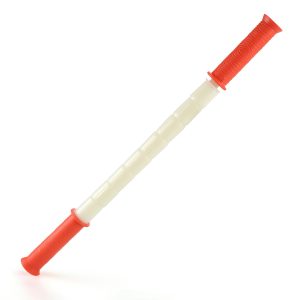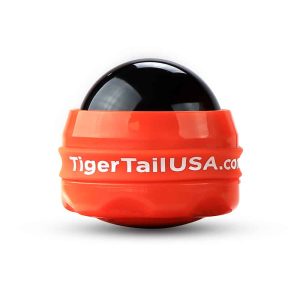Ankle Pain
Muscle knots in the muscles on the outside of the ankle and low leg can cause pain near the outside ankle bone and sometimes on the outside of the foot. Pain or discomfort can also be felt behind the outside ankle bone. Other symptoms can include weak ankles, pain on the outside top of the foot, and pain on the outside of the heel.
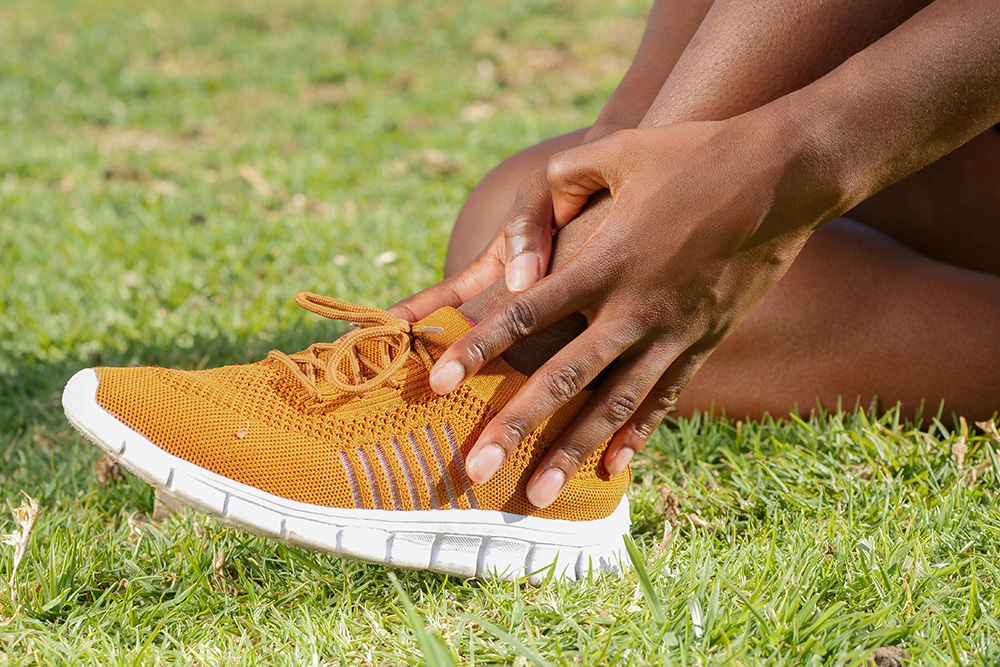
Causes
Hyperpronation: This describes an excessive inward rolling of the foot during walking or running. Over time, hyperpronation can contribute to pain and injury in the ankles, shins, knees, and even hips due to misalignment of the skeletal and muscular system.
Flat feet: This can significantly increase the likelihood of developing painful muscle knots in the lower leg. When the arch collapses, it forces the ankle to roll inward (hyperpronation), placing excessive strain on other muscles of the lower leg. This constant stress can lead to the formation of muscle knots, which in turn cause a dull ache, inflammation, and increased pain around the ankle joint.
Immobilization: When the ankle joint or surrounding muscles are immobilized—for example, due to a cast or brace—it can lead to muscle weakness and stiffness. This period of inactivity often promotes the development of muscle knots. Once movement resumes, these previously muscle knots can become active, causing referred pain to the side of the leg and ankle as the deconditioned muscles are put under stress. This pain can be particularly noticeable as the muscles struggle to handle the demands of walking or other weight-bearing activities.
Frequent Ankle Sprains: Frequent ankle sprains can significantly contribute to chronic ankle pain, often leading to the development of painful muscle knots. Each sprain can lead to instability and compensatory muscle patterns, where surrounding muscles tighten and become overworked to stabilize the joint.
Running or Walking on Uneven Surfaces: Walking or running on uneven surfaces can significantly contribute to ankle pain and instability. The constant micro-adjustments your calf muscles must make to maintain balance on uneven surfaces lead to their overuse and a higher likelihood of developing muscle knots. These muscle knots in overworked calf muscles can then contribute to instability, making you more prone to ankle rolls or sprains.
Running or walking in worn-out shoes: This can significantly contribute to ankle pain by altering your natural running and walking patterns. As the cushioning and support break down, your foot and ankle must work harder to absorb impact and maintain body stability. This extra effort can lead to the overuse of muscles in the calf and foot, promoting the development of painful muscle knots. These knots not only cause localized pain but can also lead to instability and referred pain patterns, making you more susceptible to ankle sprains and chronic discomfort.
Morton Foot Structure or Elevated First Metatarsal: Did you know that the shape of your foot can contribute to ankle pain? If you have a Morton’s foot, where your second toe is longer than your big toe, or an elevated first big toe (metatarsal), it can throw off your foot’s natural mechanics. This foot structure causes you to shift more weight onto the outer part of your foot and the second toe when you walk or run. Over time, your calf and ankle muscles have to work extra hard to keep you stable. This constant strain can lead to the development of painful muscle knots, which then become a source of chronic ankle pain and instability.

I Feel
Outside Ankle Pain
That persistent ache you feel around your outside ankle may be referred pain from tight muscle knots in the front part of your outer hip muscle, the anterior portion of the gluteus minimus. The discomfort usually concentrates on the outer ankle bone and along the outside of the shin, presenting as a deep, nagging ache that sometimes includes a tingle. You’ll notice the pain worsens when you’re doing activities that heavily load the hip, like walking briskly or running, climbing stairs, or standing on one leg (such as when putting on socks). Because this muscle stabilizes the hip during walking, its knotting can easily mimic more serious issues, such as peroneal tendonitis or even a stress fracture in the lower leg. The muscle high on the side of the hip can pull the hip and ankle tight, restricting your stable foot placement.
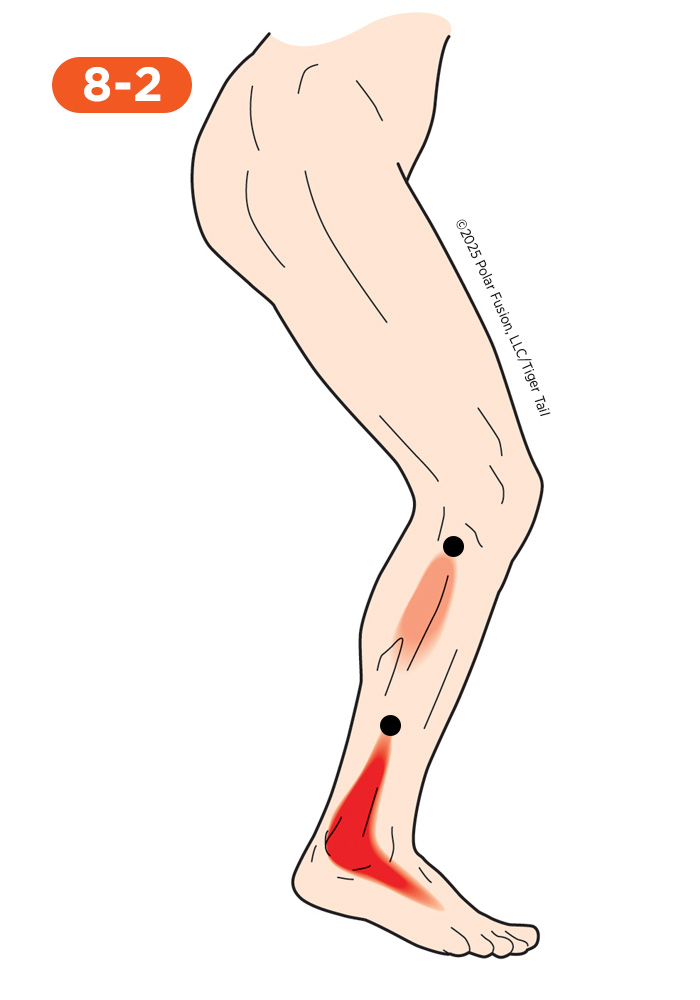
I Feel
Weak Ankles
Weak ankles don’t always feel painful right away, but rather, they feel unstable and unreliable due to chronic muscle knots in the outside lower leg muscles, the peroneus longus and brevis. You might notice a wobbly or shaky sensation behind the outside ankle bone, especially when you’re standing on one leg or walking on uneven surfaces. It can feel like your ankle might unexpectedly give way or buckle. You might also feel a sense of not having complete control over your ankle movements, like it’s a bit loose or floppy. Sometimes, you might experience general fatigue or tiredness in your ankles, even after just moderate activity. You might also be more prone to rolling your ankle or feeling a nagging ache after any slight twist or strain.
Frequent Sprains
Frequent ankle sprains can lead to different sensations over time. The tendency toward frequent ankle sprains can often be traced back to underlying tightness and weakness from muscle knots in the outside lower leg muscles, the peroneus longus and brevis. The first time you sprain an ankle can be painful, with a sharp, intense sensation right around the joint. Swelling and bruising can develop, making the ankle feel stiff and tender to the touch. Chronic ankle sprains can lead to a feeling of instability that can worsen when you make quick, forceful movements, such as landing a jump, pivoting in sports, or stepping off a curb unexpectedly. Because tight knots impair the muscle’s reaction time, their presence can easily mimic deeper problems, such as ligament tears or chronic ankle instability.

I Feel
Weak Ankles
When you feel like you have weak ankles, the problem may be originating in muscle knots in the small, often-overlooked muscle on the front of your outer shin, the peroneus tertius. The instability usually focuses on the front and outer ankle, presenting as a deep, nagging ache that feels very localized to the bone. You’ll find the pain and instability get significantly worse when you’re doing activities that require you to lift your foot, like hiking up steep terrain, running, or walking on your heels. Because this muscle helps lift the foot, its knotting can easily mimic deeper problems, such as shin splints or anterior ankle impingement. The muscle is susceptible to pressure low on the front of the shin, and it leaves the foot feeling weak and restricted, making it difficult to clear the ground fully while walking.
Frequent Sprains
That tendency toward frequent ankle sprains can sometimes be traced back to underlying weakness and tightness from muscle knots in the small muscle on the front of your shin, the peroneus tertius. The instability usually focuses on the front and outside of the ankle, presenting as a sharp, intense pinch during sudden movements, often accompanied by a dull throb afterward. You’ll find the instability worsens when you’re taking quick actions that require you to lift your foot, like hiking up steep terrain, pivoting in sports, or stepping off a curb unexpectedly. Because this muscle helps lift the foot rapidly, its muscle knots can easily mimic deeper problems, such as chronic ligament laxity or other ankle weakness. The muscle can cause the foot to feel sluggish and restricted, preventing the quick correction needed to avoid a sprain.
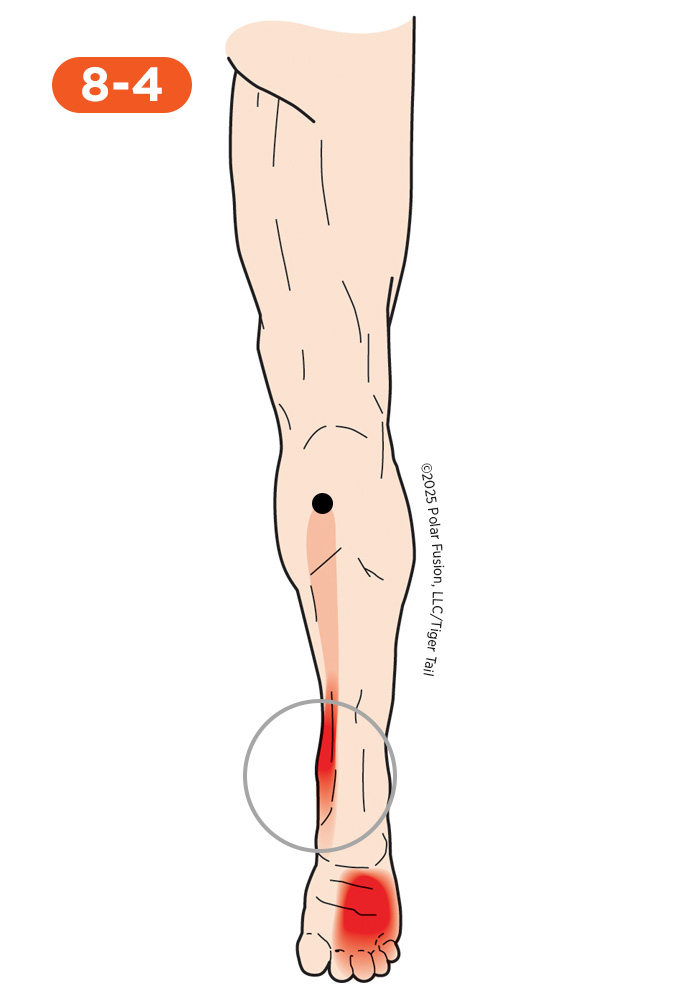
I Feel
Tarsal Tunnel Syndrome
Tarsal tunnel, what? Tarsal tunnel syndrome often presents as tingling, numbness, or burning in the ankle that can spread into the foot and toes, caused by muscle knots in the deep calf muscle, the flexor digitorum longus. The discomfort usually focuses deep in the sole and behind the inner ankle bone, presenting as a burning tingle or sharp, deep ache that can sometimes run along the arch. You’ll find the pain gets significantly worse when you’re doing activities that grip your toes, like walking barefoot, running for a distance, or wearing tight shoes. The pain might feel like “pins and needles” or an electric shock. You may notice these sensations more at night, making the foot feel restricted and tight, especially when you try to move your toes and ankles.


